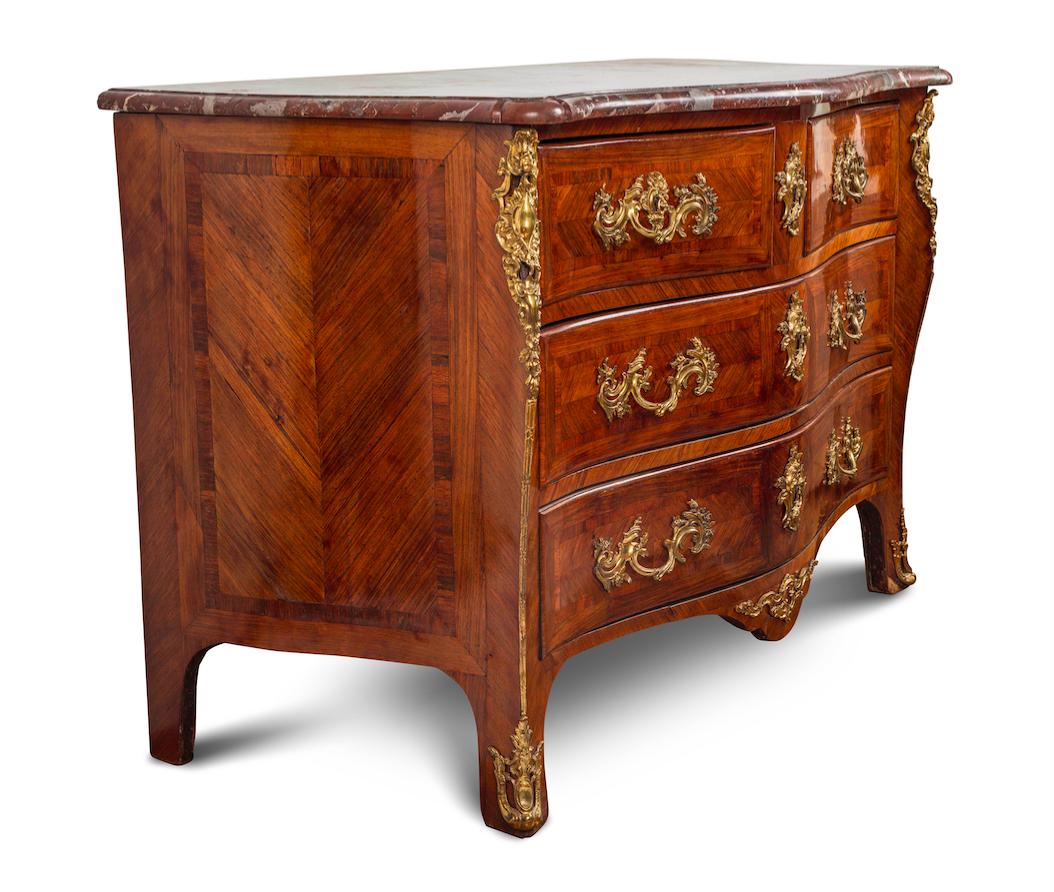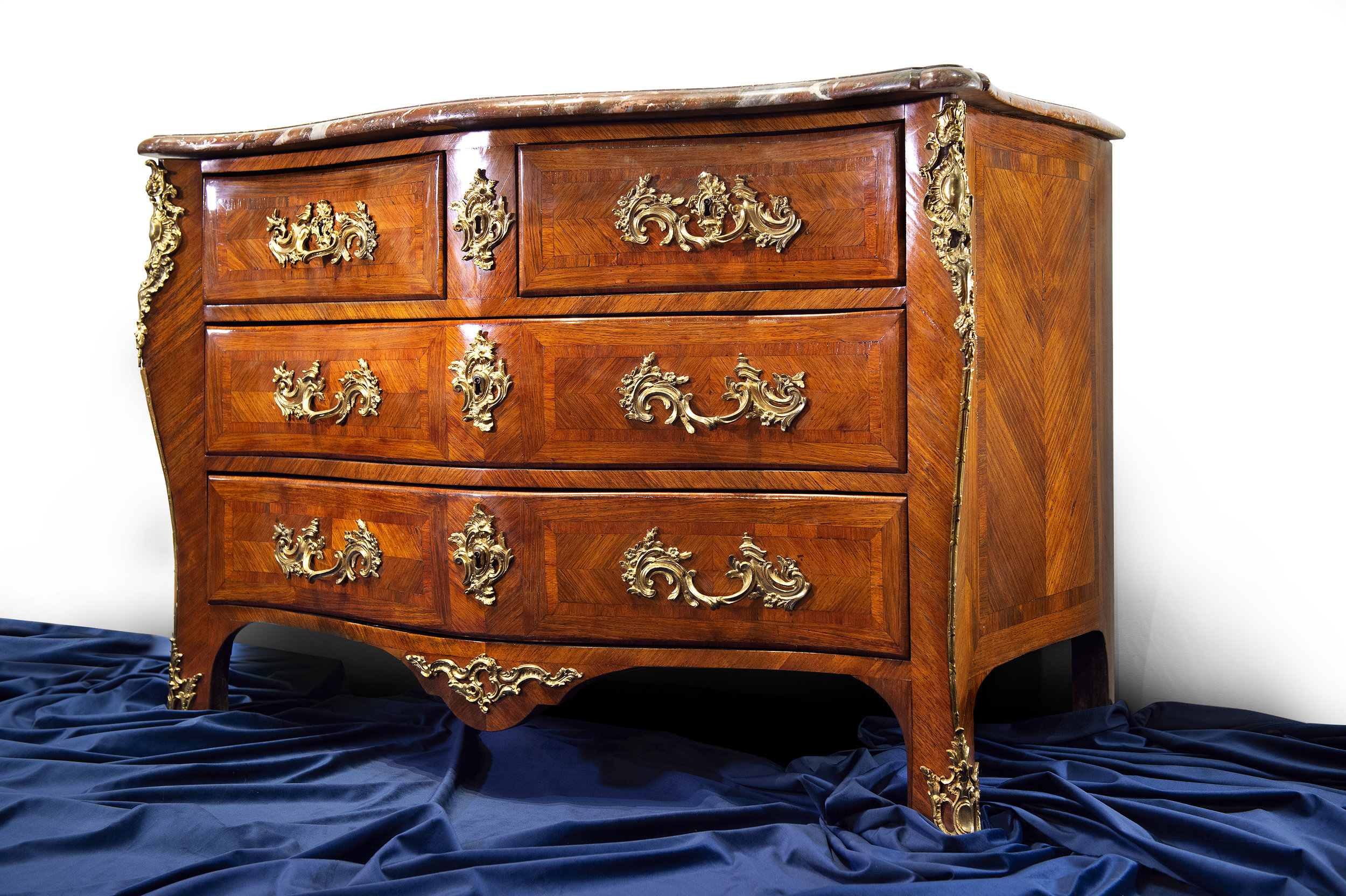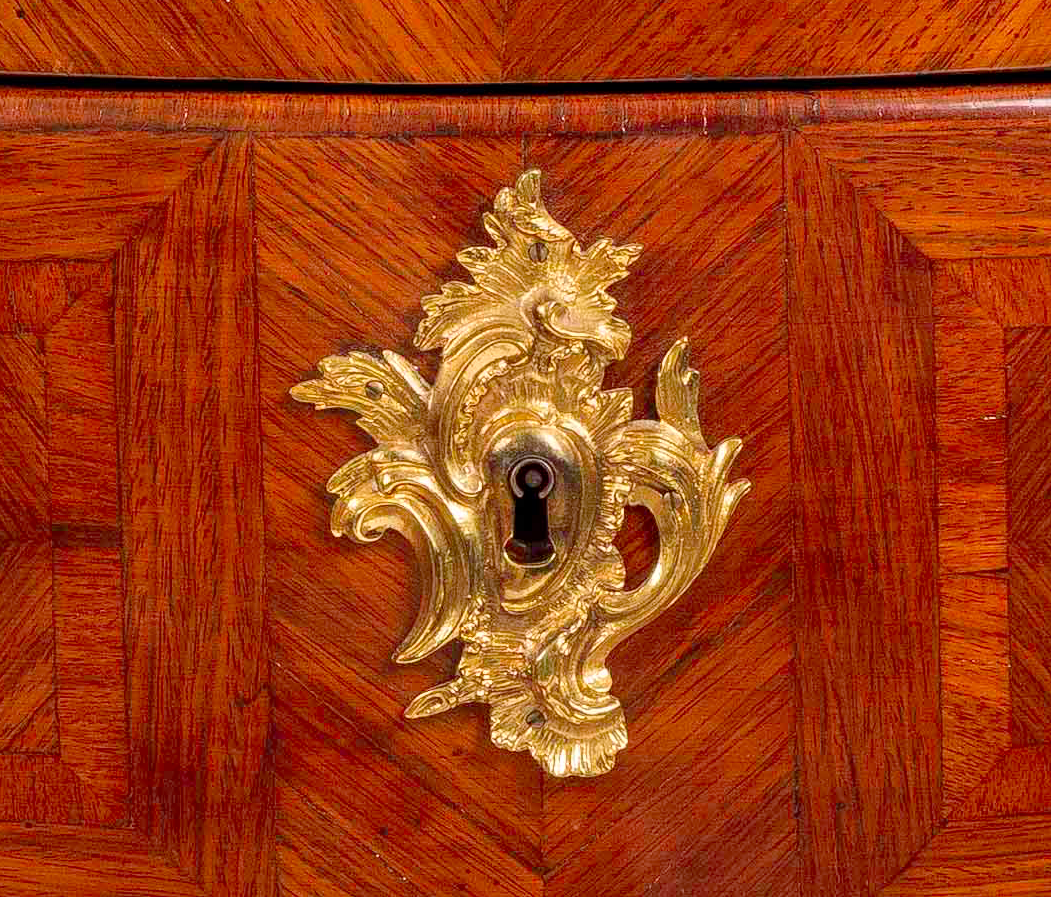18th century Rococo Commode (SOLD)
A Louis XV period chest of drawers or commode circa 1740; perhaps the most emblematic piece of French 18th century furniture.
A 1997 Les Echos Parisian newspaper article gleaned from several interviews with the great Parisian antiquaires that “certain clients enter the art market once in their lives to make a single purchase with the intention to leave something of importance to their children. In 90% of cases, the piece in question is a commode.”
Commode, in French, means “handy or useful,” but is used here to name these decorative side tables that emerged in the late seventeenth century. The first commodes were particularly grand decorative works with exquisite bronze ornamentation. The first known model features one drawer and Boulle marquetry of brass, tin, and tortoise shell. It was to be placed against a wall and meld into a coherent decorative scheme.
The Louis XV period French commode contains four drawers, opening by three rows. The curved sides, as well as the serpentine façade are veneered with contrasting strips violet wood arranged in an elegant geometric fashion. The Louis XV style, French rococo, is one of the few unique styles in history to break away from Classical influence. It brings the movement and beauty of nature indoors, and allows for an element of chance in design. This gives it a kind of wit and semantic lightness; a welcome contrast to the authoritarian tone of the French court expressed in the decorative arts of the previous period.
The side posts are adorned with and protected by chiseled and gilt bronze ornamentation. Upon close inspection it is reasonable to say that these bronzes, handles and key escutcheons are original to the piece. Often when the original bronzes are lost and replaced, the replacements are of such a nature that no close inspection is needed to detect them. The chest is topped with red Languedoc marble which follows the contoured mouvement of the façade.
This list of the different elements having come together to create this commode would reveal forgotten 18th century process of multiple skilled artisans collaborating to create a single work of decorative art. (Each is master of their own task - whether gilder, bronze maker, master carpenter, ébéniste, marble miner or sculptor. One should also note the difficulties met by the packers and shippers of the day who moved primary materials and finished pieces over bumpy roads in wooden wagons.
H: 34.25 in. L: 51 in. D: 26 in.
Myers & Monroe, LLC


